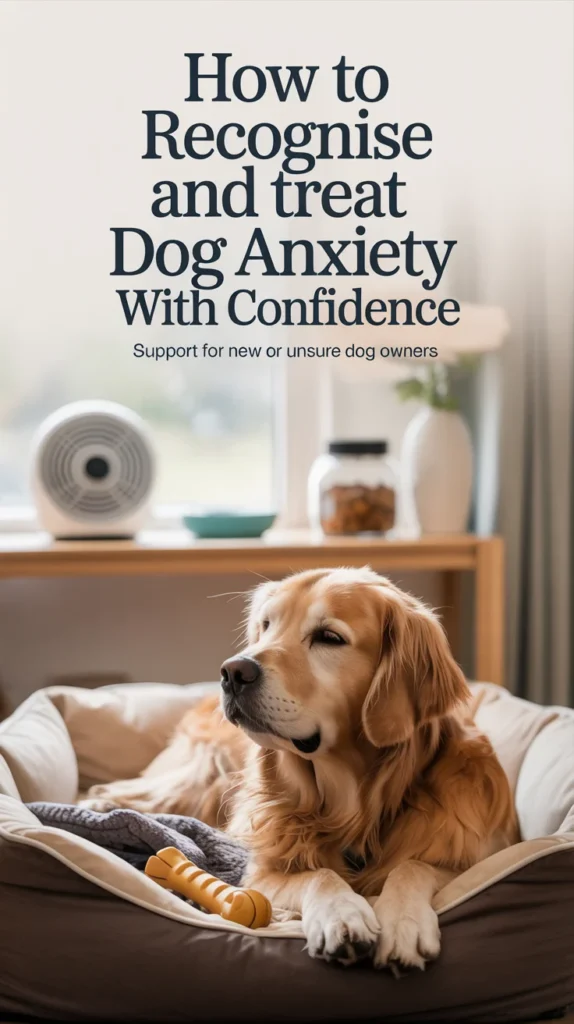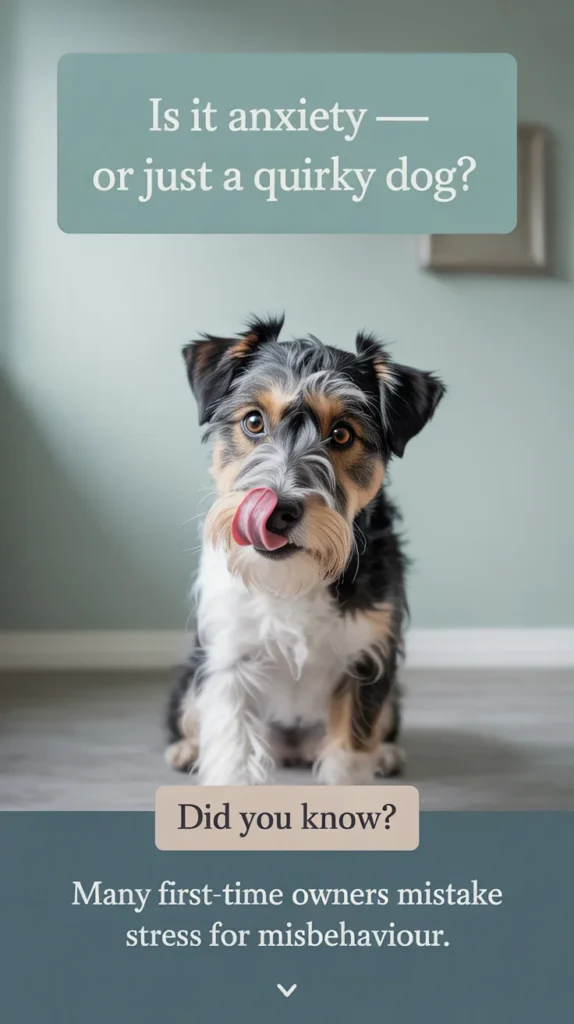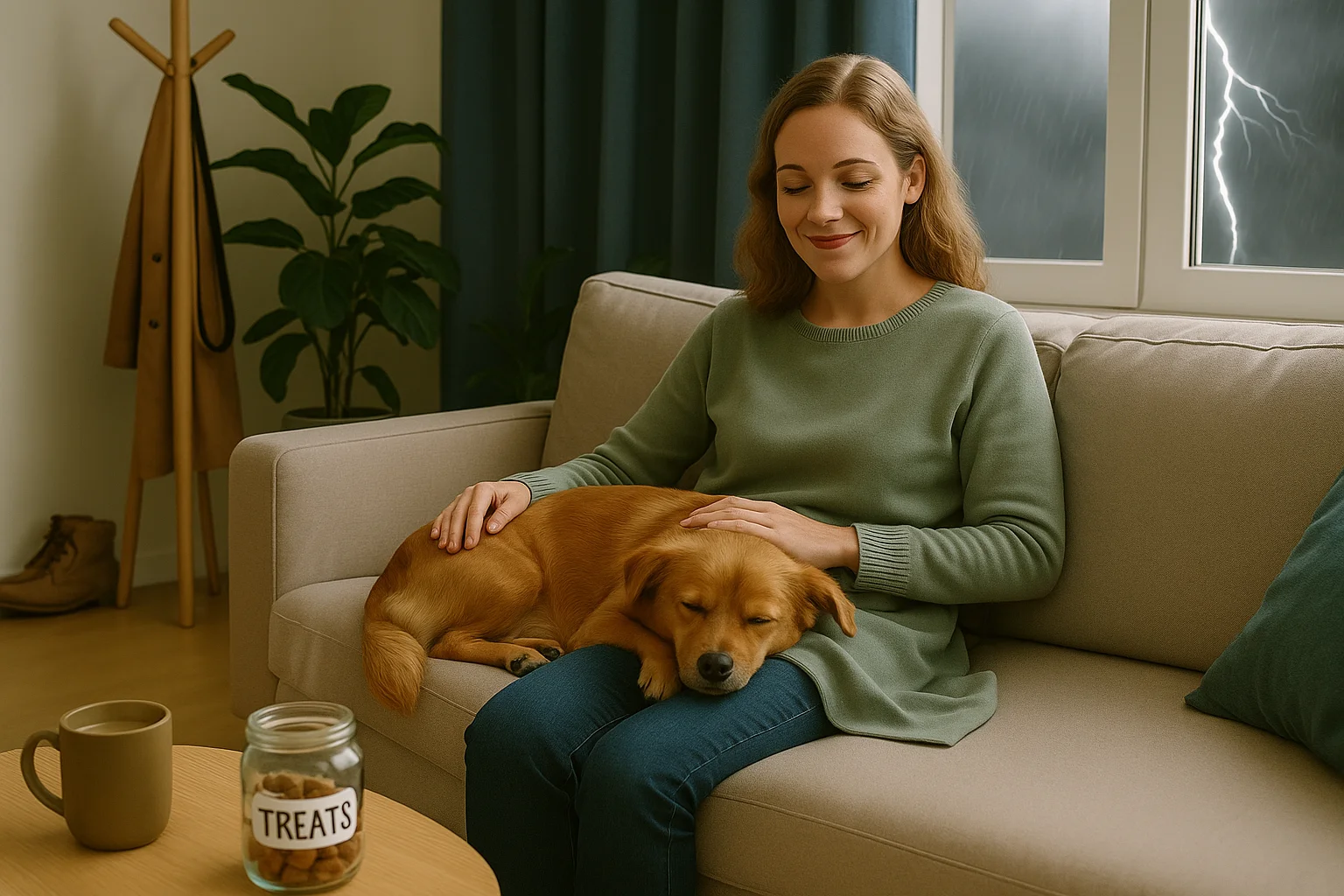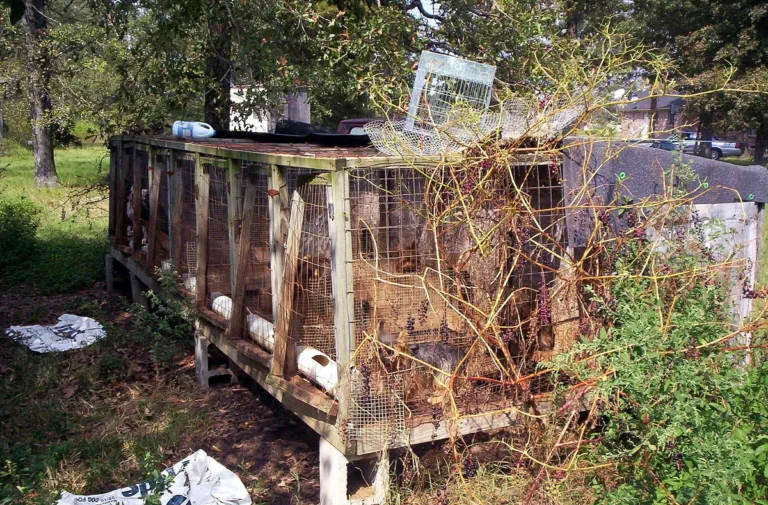How to Recognise and Treat Dog Anxiety with Confidence
Your dog isn’t just being stubborn, quirky or dramatic — anxiety in dogs is real, and it’s more common than you think. With so many causes (noisy neighbours, big changes, even a missing toy), it can sneak up on any dog, no matter their breed or temperament.
Here, you’ll find out how to spot those subtle signs, like loss of appetite and hiding, and what you can do to help your worried pup relax. Let’s make anxiety less scary for both of you.
Table of Contents
Understanding Dog Anxiety: Signs and Common Triggers
Anxiety in dogs can feel like an invisible gremlin — sometimes it’s right behind the sofa, other times it’s just below the surface, making everything feel a bit “off.”
The signs can sneak up or shout at you, either way, knowing what to look for will help you step in early, before worry turns into full-blown panic.
As the Merck Veterinary Manual explains, anxiety in dogs can have several different causes, with the most common ones being fear, separation, and aging.
Let’s take a close (but friendly) look at the clues your dog might be anxious, and what could be causing it.
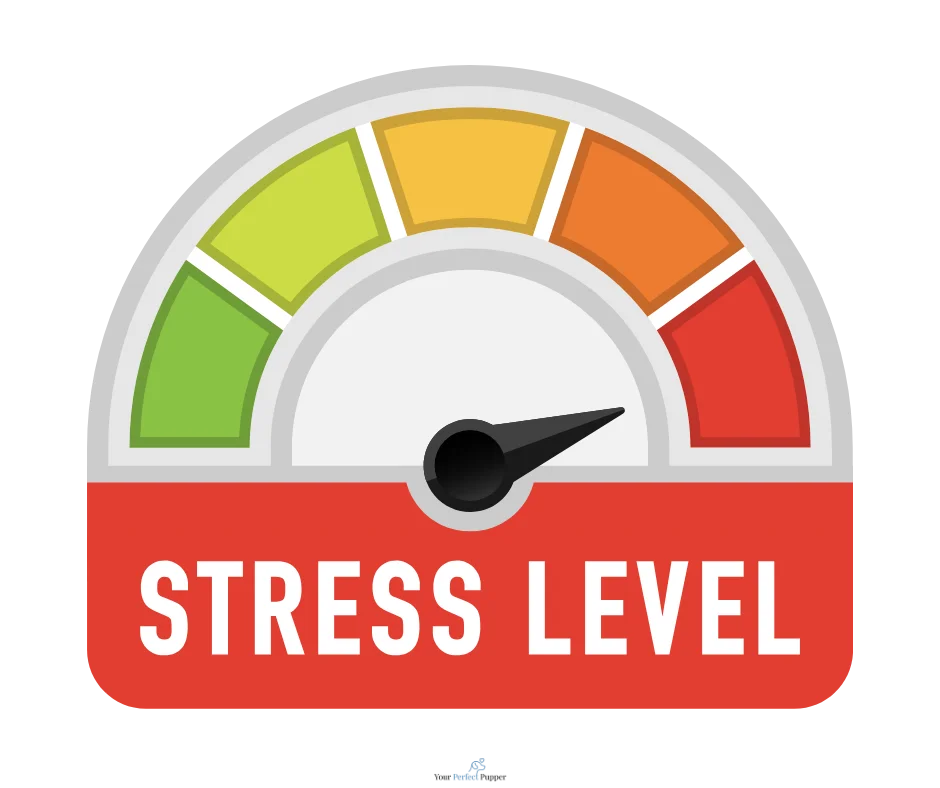
Recognising Anxiety: Symptoms to Watch for
Dogs don’t have words, but their bodies do a lot of talking. If you catch your dog acting strangely, you might be seeing anxiety in action.
Keep an eye out for these tell-tale signs:

Early recognition can make a world of difference, especially for first-time owners. If you spot one or two of these occasionally (say, after a big scare), no need to panic. But frequent or escalating signs? That’s your cue to step in and help your furry friend feel safer.
Did You Know? Some breeds and personalities are just more sensitive than others. Border Collies, German Shepherds, and even some little lapdogs may feel things more deeply. But any dog, no matter the breed, can become anxious in the right (or wrong) circumstances.
Major Causes and Triggers of Anxiety in Dogs
Dogs are creatures of habit with the emotional honesty of a young child: big changes, loud noises, or awkward introductions can really throw them off.
These are the usual culprits when anxiety makes itself at home:
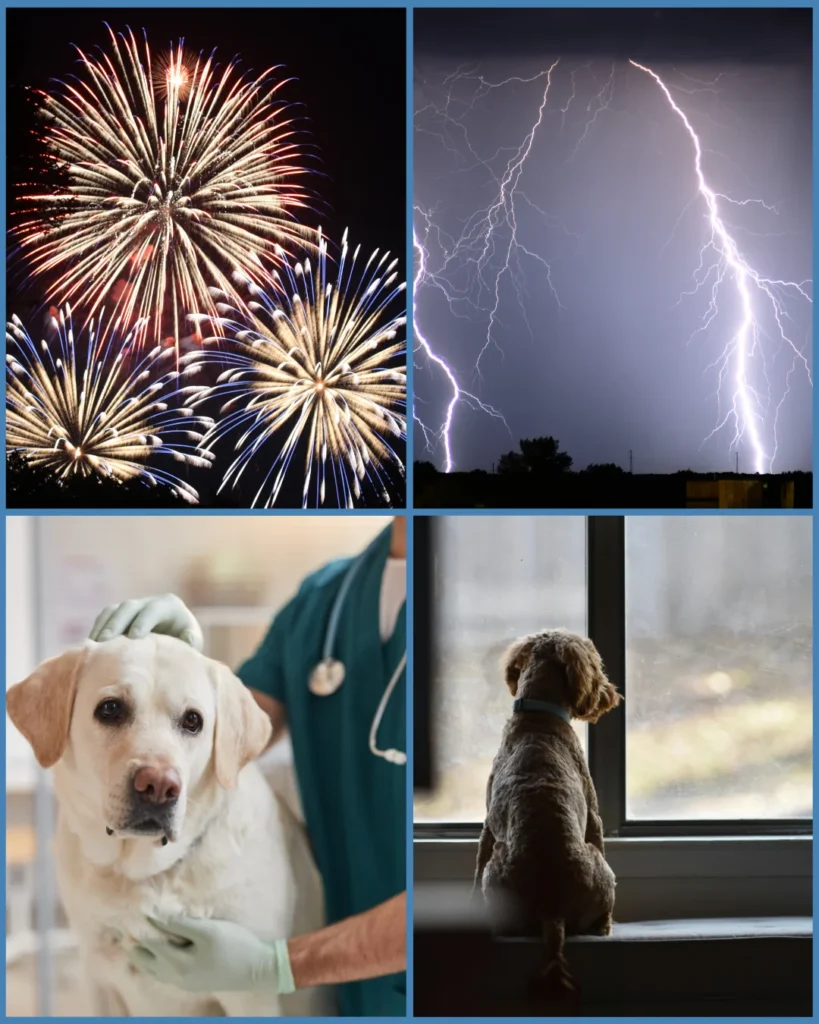
Spotting what triggers your dog’s nerves gives you the power to help. Think of it like playing detective: watch, listen, and take notes.
Over time, you’ll become your dog’s best advocate, helping them feel safe and calm, no matter what life (or the neighbour’s fireworks) brings.
Practical Strategies to Soothe Your Dog’s Anxiety
When your dog is anxious, you want something that works and is fast, gentle, and practical. Good news: simple changes in your home, your routine, and your training style can make a huge difference.
You don’t need a master’s degree in animal behaviour. Just a bit of patience, a sprinkle of creativity, and the right tools. Here are the best ways to help your dog find their calm.
How Can I Prepare and Help My Anxious Dog?
There are several things you can try, and while it depends what your dog is anxious about, here are some ways you can help him:

A good safe space shouldn’t feel like exile. Instead, it’s a place where your dog chooses to unwind.
If you want to know more about specific tools, keep reading, there is a ‘Calming Tools and Products’ chapter just further down.
Behavioural Techniques: Desensitisation and Counterconditioning
Some triggers, such as vacuums, visitors, thunder, just can’t be avoided forever. That’s where gentle training comes in. Done right, you can help your dog see scary things as “no big deal.”
Follow these steps to help your dog grow braver:
- Find the trigger: pinpoint what sets your dog off. Is it the front doorbell? Rain on the windows? Identify it so you can work on it.
- Start small and safe: expose your dog to a mild version of the trigger. For example, play thunder sounds quietly or have a friend knock softly.
- Pair with good stuff: as soon as your dog notices the trigger but before panic sets in, feed tasty treats, play with a favourite toy, or offer gentle strokes. The goal is for them to think, “Oh, this isn’t so bad…actually, good things happen!”
- Stay under their threshold: if your dog looks scared or bolts away, the trigger was too much. Go back to an even milder version.
- Repeat and build up slowly: little by little, make the trigger slightly bigger (increase sound or get a bit closer). Always reward calm behaviour.
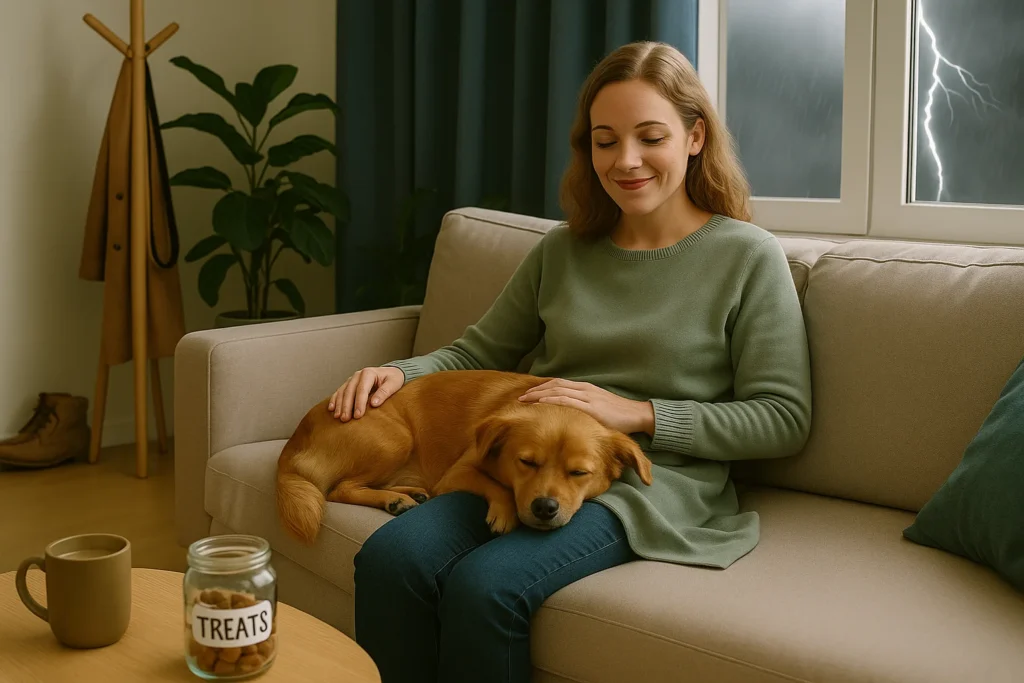
Patience is key. Dogs learn at their own pace, so don’t rush or push too hard. Avoid punishment or “tough love” because this only makes things worse. If you feel lost, ask your vet or an accredited trainer for guidance.
Calming Tools and Products
Sometimes you need extra help. Luckily, there’s a range of products designed to create a chill vibe for anxious dogs. Here’s what’s worth trying:
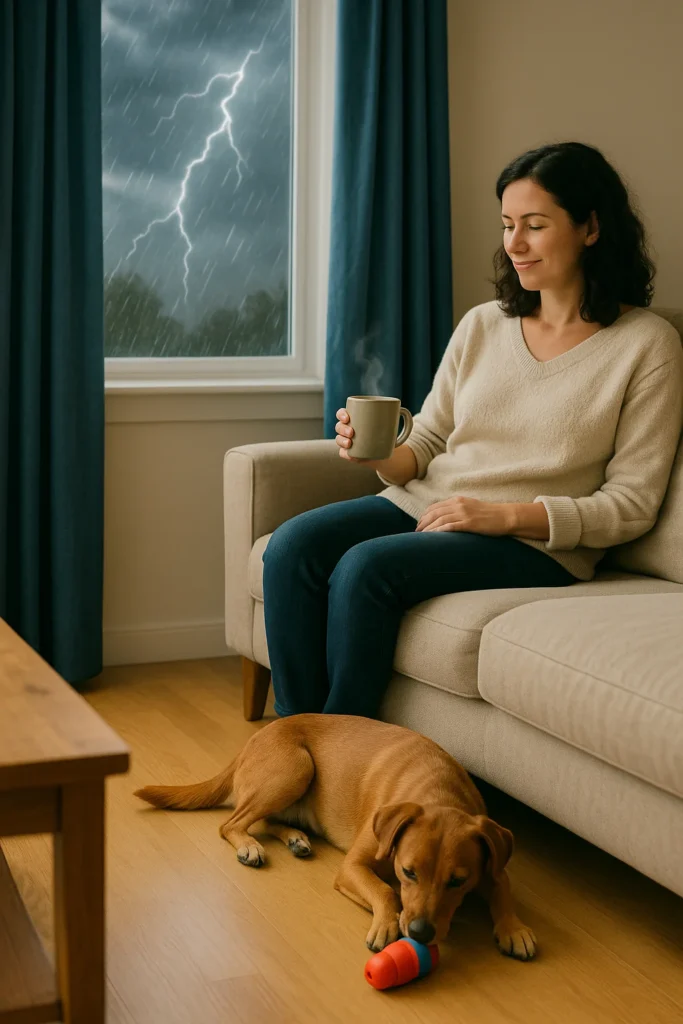
Keep in mind, every dog is different. Some might love their new calming routine or vest, while others might ignore it. Mix and match tools, and notice what your dog responds to best. If something’s not working, try a different approach.
Bringing all these pieces together — routine, a cosy retreat, gentle training, and calming tools — gives you a personalised toolkit to tackle your dog’s anxiety. It’s all about small steps and big love.
Seek Professional Help
Sometimes, you just need some extra help and guidance, and there is nothing wrong with that. Especially first-time dog owners might feel overwhelmed, so seeking professional help will give you peace of mind that you are not alone.
I suggest going to a vet first, as they can help determine if there are no medical problems causing the anxiety. When consulting a vet or behaviourist, you can (and should!) expect the following:
- A deep dive into health: first, the vet will do a full workup to rule out hidden health issues. Sometimes, what looks like anxiety is pain or a medical condition.
- A behavioural detective game: behaviourists look at the big picture — your dog’s history, daily routines, habits, and every detail you can share. No quirk is too small.
- Tailored plans, not guesswork: you’ll get a step-by-step plan just for your dog.
- Clear Communication: Good pros make everything easy to follow. They check in, tweak the plan, and answer your questions.
- Focus on safety: if there’s any aggressive behaviour (growling, snapping, biting), or your dog is hurting themselves, they’ll put precautions in place to keep everyone safe.
- Teamwork: sometimes, your vet or behaviourist may work together—combining medical insight with behaviour know-how. It’s a dream team approach.
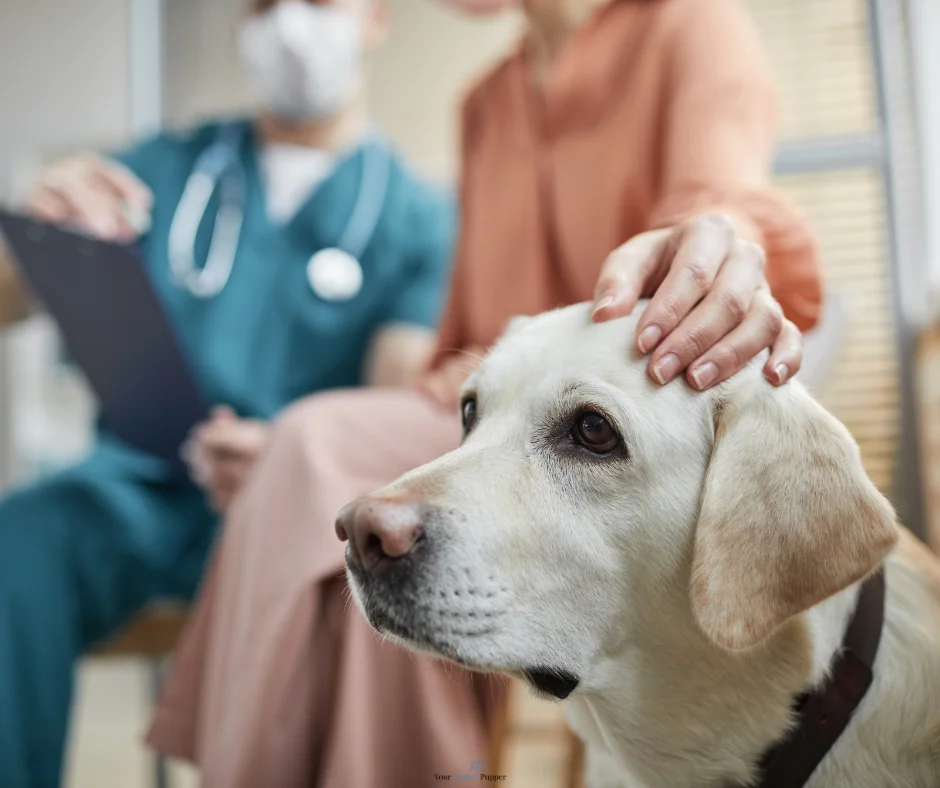
Medical and Natural Therapies: What’s Safe and Effective?
For stubborn anxiety, lifestyle changes and training might need a boost from scientifically-backed therapies. With your vet’s guidance, you can safely explore options such as medication or supplements.
Vet-Prescribed Medication
Some dogs, just like humans, need extra help from modern medicine. Here’s what’s available and what you need to know:
Medication isn’t a “chill pill” that works instantly. It’s most powerful when paired with gentle training and positive changes at home.
Supplements & Natural Aids
Owners often want to try natural remedies first, before using vet-prescribed medication. While some work (well), remember — safe doesn’t mean “one-size-fits-all.”
Why Over-the-Counter Calming Products Aren’t Always Safe: lots of calming chews (see info box above for an example), sprays, and herbal blends crowd the shelves. It’s tempting to try them all, but here’s the catch:
The Golden Rule: Always Get Professional Advice:
Most importantly: if your dog’s anxiety disrupts their everyday life, or puts them (or others) at risk, don’t wait. Pros have seen it all before, and with expert guidance, your dog can start to feel braver and more settled with each day.
Bringing It All Together
Helping your dog feel secure starts with spotting the small changes, after all, those early signs are your secret weapon. Blending daily routines, cosy safe spots, toys, and gentle training gives you a real chance to turn anxiety into calm.
If things get tricky, there’s no shame in calling in the pros — lots of owners need expert advice to get it right. Your efforts to understand and support your dog matter more than you know.
Every anxious dog can improve with kindness, routine, and the right guidance. Stick with it, stay patient, and trust that you’re doing a great job.
Just brought a dog home — or thinking about it? If anxiety is one of the things you’re unsure about, I’d love to hear what you’re wondering or working through. Let’s talk about it in the comments.
*Please note: some of the images in this blog post are AI-generated with prompts created by me. These images do not serve an educational purpose.
Remember to pin an image to your favourite pet board!
